The internal springs of the Soviet-Polish war
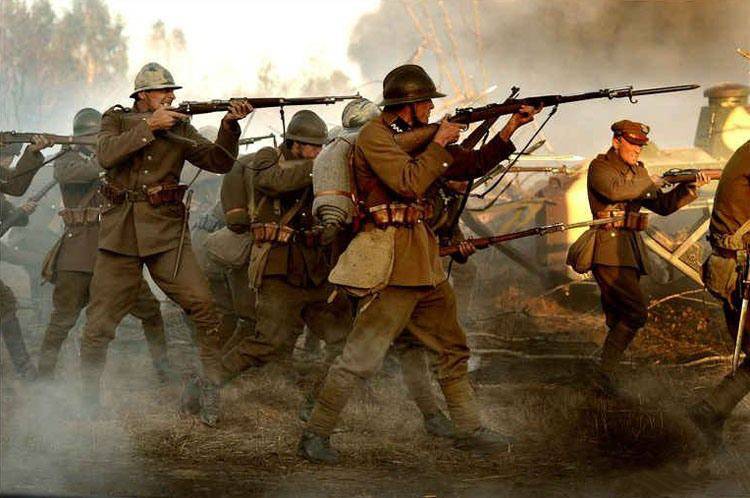
By the end of the 18th century, Polish lands were divided between Prussia and Austria. As a result of the Napoleonic wars, another repartition of Poland took place, as a result of which, in 1815, its significant territory became part of Russia. In the First World War, one of the desired goals of the German, Austro-Hungarian and Russian empires was a new repartition of Polish lands. Germany and Austria-Hungary in November 1916 of the year announced their decision to create the Kingdom of Poland in the Russian part of Poland, occupied by their troops in 1915. This "kingdom" had no definitive boundaries and consisted of two zones, governed respectively by the German and Austro-Hungarian governors-general. The puppet Polish administration was headed by the Regency Council, appointed by the occupiers in the autumn of 1917.
Since August 1914 Russia put forward the slogan of unification of all Polish lands under the rule of the tsar, promising to give the Poles self-government. 17 March 1917, the Provisional Government announced that all Polish lands would be merged into an independent Poland, Russian military alliance, the terms of which would be determined by the Russian Constituent Assembly. In October, at the second All-Russian Congress of Soviets, 1917 adopted a Decree on Peace, in which all belligerent states were called upon to immediately conclude peace, ensuring the right of all peoples to self-determination. 25 November 1917, the Russian government adopted the Declaration of the Rights of the Peoples of Russia, proclaiming the unconditional right of peoples to self-determination, including the secession and formation of an independent state. At the negotiations in Brest of our country with Germany and its allies, which began in December 1917, the Russian delegation called for ensuring the right of self-determination for all peoples and at the same time stressed that the recognition of this right by the Poles is incompatible with the recognition of the puppet administration of the Kingdom of Poland.
March 3 The RSFSR 1918 was forced to ratify the Brest Peace Treaty, which established, in particular, the domination of Germany and Austria-Hungary over the Polish lands of the former Russian Empire. A representative office of the Regent Council was established as part of the German embassy established in Moscow. In a letter to this representative office from 22 June 1918, the People's Commissar for Foreign Affairs of the RSFSR G.V. Chicherin noted that Russia recognizes the fact of forcible rejection of Poland from it, but it is precisely because of the recognition of the right of the Polish people to self-determination that the Regent Council is considered to be "a body of German occupation."
By decree of 29 of August 1918, the leadership of Soviet Russia declared invalid the treaties of the Russian Empire on the division of Poland. This act undermined the legal basis for the accession of the Polish territories to Germany and Austria-Hungary. At the end of 1918, Austria-Hungary and Germany were unable to hold onto Polish lands. With the consent of the occupiers, the Regent Council in the fall of 1918 took over the management of the Kingdom of Poland. In November 1918, the Austro-Hungarian administration was expelled by the population from Galicia, which was part of Austria-Hungary (most of the inhabitants of Western Galicia were Poles, and Easterners were Ukrainians) and from the Austro-Hungarian occupation zone of the Kingdom of Poland. Independent Polish state, which was in the process of institutionalization, started a war for the seizure of Eastern Galicia. The Polish army occupied Eastern Galicia as a result of the war against the East-Ukrainian Ukrainian nationalists, which lasted from the fall of 1918 until July of 1919.
In mid-November 1918, the Regency Council transferred its powers to Pilsudski, who after the elections to the Seym at the beginning of 1919, became the head of state responsible to parliament. Since the beginning of World War I. Pilsudski became the organizer of the Polish military units of the Austro-Hungarian and German armies. In the summer of 1917, he opposed the unconditional subordination of military personnel - natives of the Kingdom of Poland to the German command. In July, 1917 was arrested by the German authorities and held in custody until November of 1918.
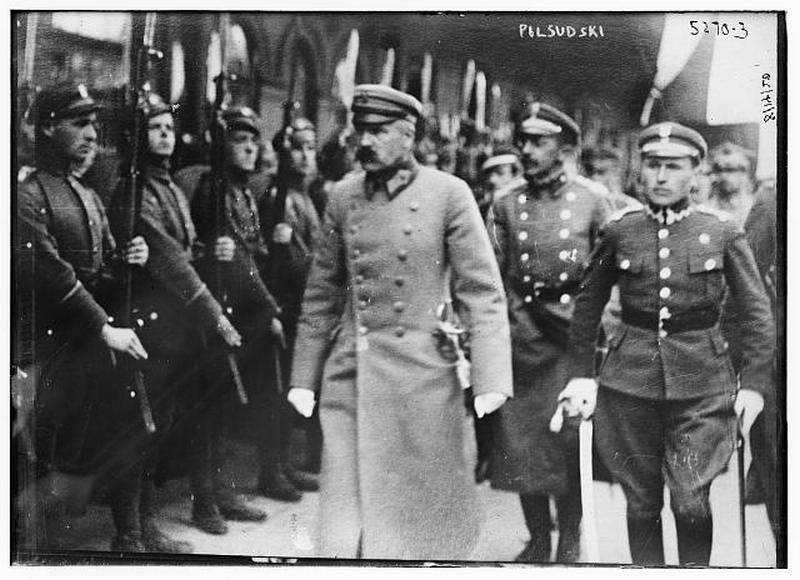
By December 1918, the German troops were withdrawn from the Polish lands, which were formerly part of Russia, with the exception of the Belostok region, which was transferred by the German command of Poland in February 1919. In January 1919, the German administration was also expelled from the German Poznan region by the Polish population.
Note from 9 October 1918, G.V. Chicherin informed the Regent Council about the direction of Y. Markhlevsky to the diplomatic representative of our country in Poland. Thus, Russia officially recognized Poland as an independent state. The desire to establish diplomatic relations was confirmed by the government of the RSFSR in radiograms sent to the Polish government at the end of 1918 and the beginning of 1919. However, Poland did not go to normalize relations. A convenient excuse for this was the closure of the representation of the Regency Council in Russia in November 1918. Y. Markhlevsky wrote that this was done by the Poles who were in the RSFSR, who believed that after the dissolution of the Regency Council his representation had ceased to represent Poland. After receiving the radiograms of the Polish government that this representation continues to be a Polish diplomatic mission, the Russian side in December 1918 provided the conditions necessary for the resumption of its activities.
It is worth noting that the Soviet troops stationed in Belarus and Lithuania included military units made up of Poles. In a radiogram to the government of the RSFSR from December 30, the Polish government claimed that these units were intended to invade Poland, but did not cite any evidence. The exchange of radiograms between the governments of our country and Poland on the question of the normalization of bilateral relations was stopped after the Polish gendarmes killed 2 on January 1919 of the representatives of the Russian delegation of the Red Cross.
In February, 1919-th in the border with Belarus regions of the German troops were replaced by the Polish, then invaded deep into the Belarusian territories. In order to conceal their aggressive plans, the Polish government with a radiogram from 7 in February 1919 proposed the RSFSR government to send its emergency representative A. Ventskovsky to Moscow for talks on controversial issues in bilateral relations.
In response, 10 from February 1919 of the year, the Russian government agreed to the arrival of A. Ventskovsky and called on Poland to begin negotiations with Lithuania and Belarus on resolving disputed territorial issues. The CEC of the Byelorussian SSR and the leadership of the Lithuanian SSR notified the Polish government about the formation of the Lithuanian-Belorussian SSR (Lit-bel) with a radiogram from 16 in February and proposed to establish a joint commission to establish the border between Litbiel and Poland. The radiogram also expressed a protest against the occupation of Polish troops of the Belostok district, and noted that the ethnic composition of the inhabitants of this district corresponds to the population of Litbel. In the course of the 1919 negotiations in Moscow from March to April, G. Chicherin with A. Ventskovsky, in a letter of March 24, on behalf of the Soviet government spoke in favor of defining the Polish eastern borders by conducting “voting of workers” in disputed areas, and in April of 15 announced the proposal of the Ukrainian SSR to begin negotiations on the establishment of the Polish-Ukrainian border.
It should be noted that these proposals contained a number of conditions that could not serve as a basis for the successful resolution of territorial disputes. In particular, the statement about the ethnic composition of the population of the Belostok district, the majority of whose inhabitants were Poles, was erroneous. Establishment of interstate borders by “voting of workers”, i.e. the suspension of part of the population of the disputed areas from voting contradicted the generally accepted norms of the plebiscite.
But if the Soviet proposals contained certain provisions that were not constructive in nature, then Poland left these proposals unanswered, since in principle it ruled out a peaceful way to resolve territorial disputes at the negotiating table. 4 on April 1919, the Polish Sejm approved the report of the Foreign Affairs Committee, which provided, inter alia, for Poland to refuse to conduct any negotiations on interstate borders with its eastern neighbors.
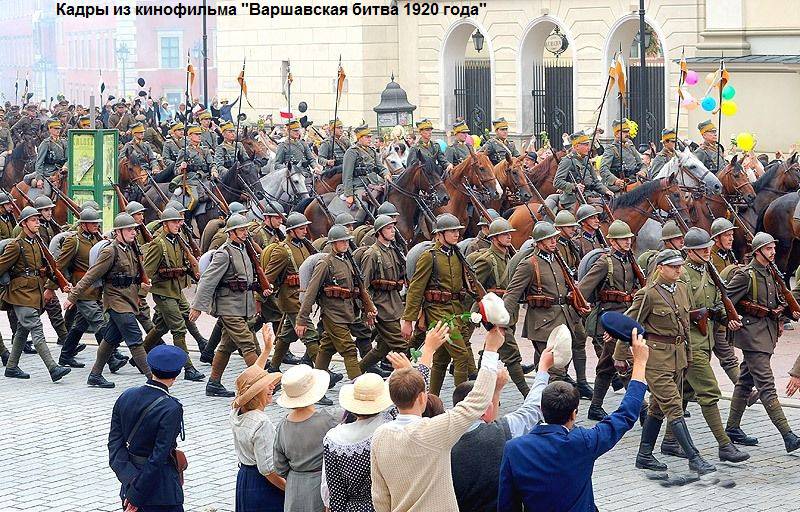
In April, 1919, Poland expanded the scope of hostilities and captured the capital of Litbel, Vilnius. The letter sent by G.V. Chicherin A. Ventskovskim from 25 April, it was stated that by doing so the Polish side frustrated the negotiations held between them, which Russia was ready to resume as soon as hostilities were suspended. In the summer of 1919, the RSFSR launched a new peace initiative, inviting Poland to resolve disputed territorial issues based on the principle of self-determination of nations. Being in June 1919 in the Polish capital on a trip from Germany to Russia, Y. Markhlevsky, on his own initiative, agreed to resume negotiations. Having received the relevant powers from the Soviet leadership, Y. Markhlevsky, at the informal negotiations in Belovezha (in eastern Poland) with A. Ventskovsky, suggested defining the nationality of the disputed territories by a plebiscite with the participation of their entire population. However, the Poles did not accept this offer. The meeting in Belovezh ended with an agreement to hold a conference of delegations of the Polish and Russian Red Cross, at which the question of concluding a peace treaty would be discussed.
Prior to 1920, Western countries officially supported the policy pursued by the White Guard towards Poland. 12 June 1919 of the year The Supreme Council of the Entente approved the provisions presented by the self-proclaimed “supreme ruler of the Russian state” A. Kolchak confirming the decision taken by the Russian Provisional Government as early as 1917 on the formation of the Polish state. Hoping that Soviet power would be overthrown in the near future, the Supreme Council of the Entente 15 of September 1919 of the year refused to Poland in its proposal to make a military campaign against Moscow, in case it was provided by the Western powers with the appropriate material and technical means. Based on these factors, the Polish government concluded that the victory of the White Guards in the civil war was not in the interests of Poland.
Taking advantage of the fact that the main forces of the Red Army were thrown first to fight against Kolchak and then against Denikin, as well as the refusal of the Eastern Ukrainian Ukrainian nationalists from the joint struggle against the aggressive actions of Poland and the Red Army, the Polish troops invaded far to the east. In September, 1919, they occupied a large part of Belarus, including Minsk, and in Ukraine the Poles advanced half the distance from the ethnic border to Kiev. Then the Polish Army reduced the activity of hostilities against the Soviet troops, which allowed the Soviet command to transfer additional forces to fight the Army of Denikin.
From the beginning of October to the middle of December 1919, the official conference of the Polish and Russian delegations of the Red Cross, headed by Y. Markhlevsky and M. Kossakovsky respectively, took place in Mikashevichi (in the Minsk province occupied by Poland). In parallel with this conference, Y. Markhlevsky, authorized by the RSFSR government to determine the basis of a peace agreement with Poland, led with the representatives of Y. Pilsudski - first with M. Birnbaum, and then with I. Berner, informal negotiations. Markhlevsky proposed to conclude a peace treaty on the basis of the establishment of borders by a plebiscite, the terms of which would have been worked out in official negotiations. The Polish side refrained from discussing this issue. But, as Markhlevsky wrote, “but it turned out that the intentions of the Polish command did not go east further than the front line at that time,” as a result of which they managed to halt military operations on the entire front. Berner’s diary says that he transmitted the following statements of Pilsudski to Marhlevsky: that the Polish Army suspended active large-scale military operations against the Red Army, while not determining the duration of the above decision on the suspension of military actions, which was made with the aim of “not assuming victories of reactionary forces in Russia ".
At a meeting of representatives of the Entente countries in London in December 1919, the British and French Prime Ministers D. Lloyd-George and J. Clemenceau stated that Kolchak and Denikin were defeated by the Red Army, and therefore it was decided to strengthen Poland so that it would play the role of a reliable barrier against Russia. Claiming that they oppose the organization of the Polish offensive against Russia, the Entente actually spoke in favor of providing Poland with material resources. However, as we remember, a few months earlier, Poland promised to start a campaign against Moscow, provided they were received.
December 8 published a decision of the leadership of the Entente on the 2 of the same month to establish a temporary Polish eastern border within the territory of the former Russian Empire, which roughly corresponded to the ethnic border. At the same time, it was stipulated that the final limit, which will be set in the future, is not predetermined. Two weeks later, the Supreme Council of the Entente decided to transfer to Poland for a quarter of a century the management of the lands of Eastern Galicia. Considering this territory as part of the Polish state, the Polish government did not agree with such a decision. Taking this into account, the Supreme Council of the Entente overturned its above-mentioned decision and decided to return to the consideration of this issue in the future. Leaving open the question of the Polish eastern borders, the Western powers actually expressed their agreement, both with the seizure by Poland of the lands of Ukraine, Belarus and Lithuania, and with the restoration of a united and indivisible Russia.
The informal talks between Y. Markhlevsky and representatives of the Polish leadership in the middle of 1919 did not lead to peace. Therefore, the government of the RSFSR decided to follow the path of official negotiations. By a radiogram of V. Chicherin, the Polish government from December 22 of 1919 was asked to start negotiations on a peace treaty.
In a radiogram at the end of January 1920, the Russian government addressed the leadership and the people of Poland with acknowledgment of recognition of the independence of the Republic of Poland and a proposal to hold peace talks. It was especially emphasized that the Red Army troops would not cross the established front line. The statement of the government of the RSFSR was confirmed by the Central Executive Committee and the government of the Ukrainian SSR in radiograms, respectively, from 2 and 22 in February of 1920. 24 February was made an official announcement of the meeting of the Polish Sejm Commission on Foreign Affairs, dedicated to the conclusion of peace with our country. The report emphasized that the Republic of Poland is in favor of “giving the opportunity to freely express their statehood to the population of those lands that are not now under Polish control, but belonged to it before 1772, when it included most of Right-Bank Ukraine, Belarus, Lithuania and part of Latvia. The Soviet press discussed the issue of a plebiscite in the Ukrainian and Belarusian regions occupied by the Polish army. In particular, in the articles published in the newspaper "Izvestia" of February 29 1920 of the year KB Radek and the editor of this newspaper, Yu.M. Steklov noted that under the conditions of the current Polish occupation there is no possibility of free will of the population, and that the Belarusians and Ukrainians, having a choice, would support joining the Soviet republics.
Delaying the answer to the peace proposals made to it, the Polish side thereby intensified tensions, under which individual Russian and Ukrainian officials made statements that went against the political line on these issues, proclaimed by the RSFSR government and confirmed by the All-Russian Central Executive Committee and the Ukrainian SSR government. For example, in the above-mentioned 29 February 1920 issue of the newspaper Izvestia, the secretary of the Moscow Party Committee A. Myasnikov claimed that “the Red troops must make a dent in the direction of militant kulak, Xenzoth and bureaucratic Poland.” It should also be noted that the Executive Bureau of the Polish Communist Party in the RSFSR, conducting propaganda among the soldiers of the Polish army to stop the war, also called for the establishment of Soviet power in the Polish Republic.
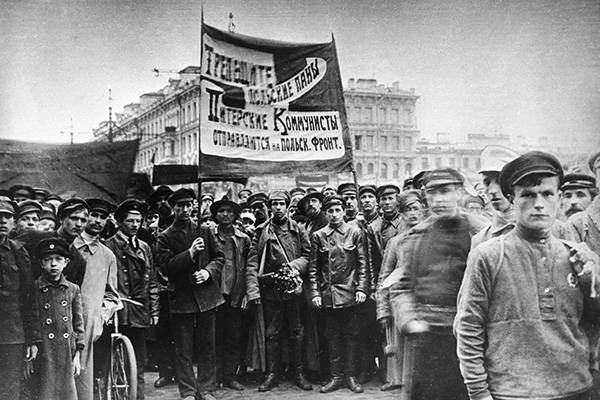
In preparation for a large-scale offensive against our troops, Polish troops in March 1920 occupied the Kalinkovichi railway junction. In radiograms sent to the Polish government, the governments of the RSFSR and the Ukrainian SSR stressed that the need to repel Polish aggression causes them to refuse to observe on the Ukrainian front the obligation not to cross the line indicated in the statement of the Russian government on January 28.
8 March 1920, the Polish leadership decided to include in its state Western Ukraine, Western Belarus and Vilnius region on the same conditions as the ethnic Polish lands, and the rest of Belarus - with the provision of self-government. At the same time, it was envisaged to create an “independent Ukrainian state” between the lands of Western Ukraine and the Polish border 1772 of the year, corresponding approximately to the Dnieper line. Based on this decision, the Polish government concluded “treaties” with its Ukrainian and Belarusian puppets. The latter recognized the conditions dictated by the Polish authorities in exchange for a promise to transfer to them the management of Poland-educated “independent Ukraine” and “autonomous Belarus”. In April, an agreement was concluded with S.V. Petlyura Directoire, which during the civil war was defeated in Ukraine and fled to the territory occupied by the troops of J. Pilsudski. In May, an agreement was also signed with the Highest Council, formed in Belarus during the Polish occupation.
With a radiogram from 27 in March, the Polish government proposed to the RSFSR government that 10 should begin on April 1920 at a Russian-Polish peace conference in the front-line Belarusian city of Borisov occupied by the Polish army and cease hostilities on this frontline for the duration of the negotiations. With a response radiogram from 28 in March 1920, our side agreed with the proposed date for the start of the conference, and also called for it to be held on the territory of a neutral state and to conclude an armistice along the whole front in order to create suitable conditions for negotiations.
In April, the exchange of radiograms on the conditions of the peace conference continued. Expressing willingness to negotiate anywhere outside the front line, the Government of the RSFSR stressed that it could not agree to organize a conference near the front line without an armistice. The insufficiently flexible position of the Russian side objectively contributed to the breakdown of negotiations by the Polish government, which refused to conclude an armistice and insisted on holding a conference in Borisov.
17 April Y. Pilsudski signed an order to launch an offensive on the territory of Ukraine from 22 April. However, in the official report of the Polish Foreign Ministry from 20 on April 1920, there was a desire to quickly start negotiations and make peace. This clearly demonstrates the duplicity of the Polish government. Poland showed readiness for negotiations only to conceal preparations for a new offensive. Thus, the Poles repeated the maneuver with the proposal to conduct negotiations, undertaken by them at the beginning of the invasion of Belarus and Lithuania in the 1919 year.
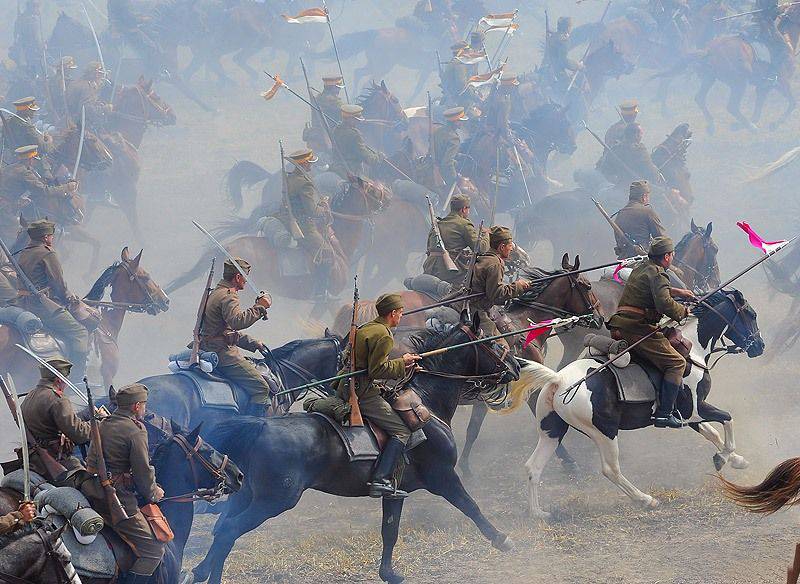
Equipped with the Entente powers, the Polish Army 25 of April launched a rapid offensive deep into the territory of Ukraine, on a wide area of the front from Pripyat to the Dniester. 6 May they were busy with Kiev. In the current situation of 29 on April 1920, the Central Executive Committee and the Government of the RSFSR formulated a new political line regarding Poland. Readiness was expressed in the case of a “glimpse of common sense among the White Poles” to make peace that would meet the interests of the peoples of the two countries. At the same time, the slogan “Long Live Workers' and Peasants Poland!” Was put forward, and it was stated that during the “revolutionary self-defense” of Polish aggression, the regiments of the Western Front would help the Poles “free themselves from the bourgeois yoke”. And M.N. Tukhachevsky in the order of July 2 gave more categorical wording. Claiming that "the fate of the world revolution is now being decided in the West", the path to which lies "through the corpse of white Poland", Tukhachevsky addressed the front troops with an appeal: "On bayonets we will carry happiness and peace to working mankind."
In mid-May, the Soviet counteroffensive began, and in June, Polish troops withdrew beyond the line on which they stood before the attack on Kiev. In July, the Red Army liberated the land of Lithuania and Belarus from the Polish invaders, and in Ukraine entered Eastern Galicia. By mid-August, our troops reached the outskirts of Warsaw and Lvov. Poland received active diplomatic support from Great Britain, which repeatedly appealed to the RSFSR demanding to conclude an armistice on the Polish front, which not only did not envisage a peace treaty establishing interstate borders along ethnic lines, but also maintained the regime of Polish occupation on parts of the Ukrainian lands of Eastern Galicia. In particular, in the radiogram of Foreign Minister J. Curzon of 11 July, it was proposed to conclude an armistice with the condition of withdrawing Polish troops for the temporary border of Poland defined by the Entente at the end of 1919, within the territory of Tsarist Russia and preserving the positions held by the parties in Eastern Galicia. At the same time, it was especially emphasized that Britain and its allies would render Poland all-round assistance in the event that the Red Army crossed the Polish temporary eastern border established by the Entente. As such a border, which received the name of the Curzon Line, the border defined earlier by the Entente within tsarist Russia, extended southward to the Carpathians and separated Eastern Galicia from Poland, was indicated.
The Chicherin 17 response radiogram of July 1920 to the English government was informed of the readiness of the RSFSR to start peace talks with Poland in the case of appropriate direct treatment from her, and to make peace establishing the eastern Polish border along the ethnic border of Polish lands, which is slightly east of the Curzon line . However, Poland, hoping to stop the offensive of the Red Army, sought to delay the start of negotiations.
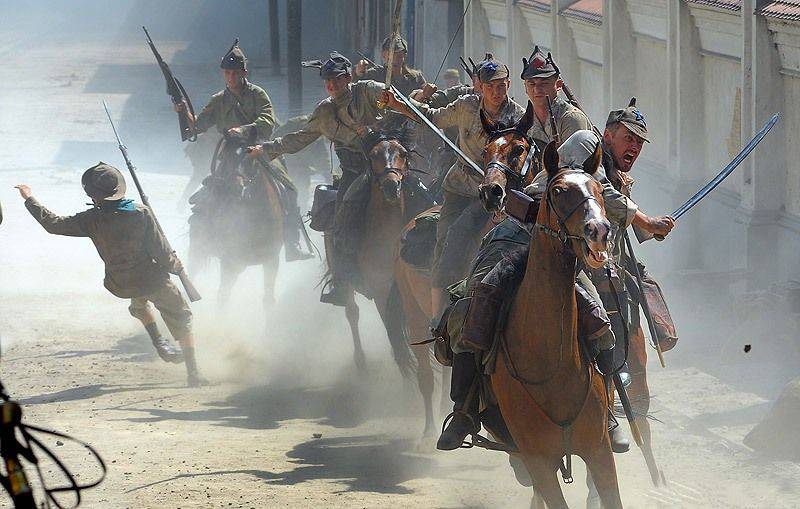
19 July 1920 The party's organizing bureau formed, from the Communist Poles in Russia and Ukraine, the Polish Bureau of the Central Committee of the RCP (b) (Polish Bureau) chaired by F.E. Dzerzhinsky. 30 July 1920, in the Bialystok occupied by the Red Army, Polburo formed from among its members the Provisional Revolutionary Committee of Poland (Polrevkom), headed by Y. Marchlewski. On the same day, Polrevkom announced the seizure of power in Poland, but was not properly supported by the population even on Polish territory occupied by the Red Army. It should be noted that an attempt to impose on Poland a change in its socio-political system only made it difficult to reach an agreement on concluding a peace treaty with the actual Polish government.
On the last July day of 1920, the re-establishment of the Byelorussian SSR was proclaimed in Minsk. In accordance with the peace agreement between Lithuania and the RSFSR, which determined the line of the Soviet-Lithuanian border, and the convention on the withdrawal of our troops from Lithuanian territory, signed on July 32 and August 6, Vilnius was transferred to Lithuania.
The Poles tried to gain time to prepare for a new offensive against the Red Army, approaching the Curzon line. Again, as in February 1919 of the year and in March-April of 1920, Poland declared its readiness to negotiate with the RSFSR. With radiograms from 22 July 1920, the Polish government proposed to conclude an armistice and proceed to peace negotiations, and the military command - only to establish a truce. In response, 23 July 1920 radio messages from the Russian government and the military leadership agreed to negotiate a truce and a peace treaty. It was agreed that the Polish peace delegation would cross the front line on July 30 1920.
27 July 1920 The English and French Prime Ministers D. Lloyd-George and A. Millerand, meeting in Boulogne, decided that the aim of the Soviet-Polish negotiations should be to conclude an armistice without Poland’s commitment to a peace treaty. At the same time, the same decision was made by the Council of Defense of the state formed by the Polish Sejm, which had extraordinary powers in resolving issues of warfare and peace. 29 July 1920, the Polish government decided to refrain from simultaneously negotiating a truce and peace. Thus, the breakdown of negotiations was predetermined. Having crossed the front line on 30 July 1920, the Polish delegation returned to Warsaw after August 2 suggested that our side negotiate a truce and peace terms. The continued offensive of the Red Army forced the Polish Defense Council to decide to agree to conduct peace negotiations.
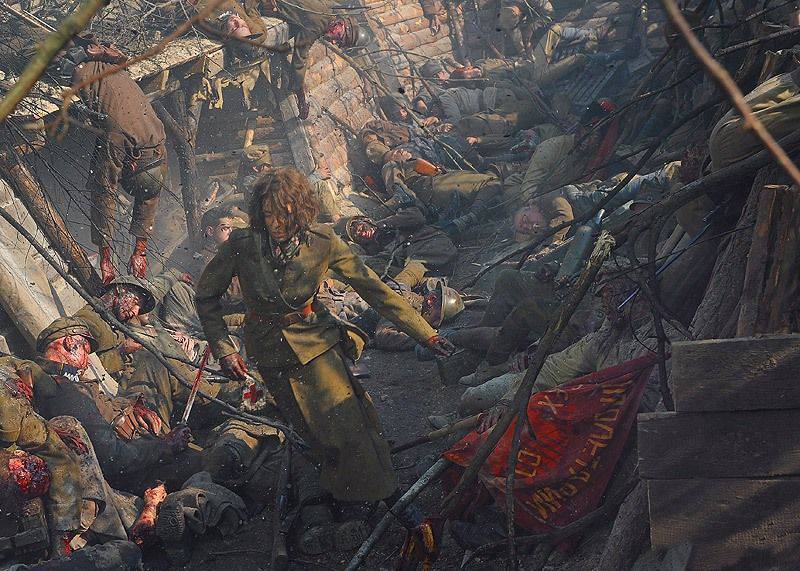
However, the coordination of the issue was delayed until the end of August 1920. The reason for this was the poor radio communication between Moscow and Warsaw. Attempts to produce radio traffic through London caused long delays from the British. In the end, we agreed on the transition of the Polish delegation to the front line 14 of August.
By the fall of 1920, the situation on the Soviet-Polish front was in favor of Poland, which received military assistance from the Entente countries. Red Army at the same time was forced to send their reserves to fight Wrangel's troops. In addition, the Red Army scattered its forces, attacking parallel to Warsaw and Lviv. The Poles successfully used the mistakes of the Soviet military command, first of all Tukhachevsky, and defeated our Western front, which acted on the Warsaw direction. Such were the conditions of 17 August, when a peace conference gathered in Minsk for a meeting. The Soviet delegation proposed to conclude a peace treaty and establish a border between states, on the whole corresponding to the Curzon line, taking into account ethnic borders. In addition, it was proposed to reduce the Polish army, and transfer the armament of the reduced units to the RSFSR. A number of proposals carried, in essence, the meaning of direct intervention in the internal affairs of Poland, since the Soviet side proposed the creation of civilian militia units from among the Polish workers, to which the RSFSR would transfer some weapons Polish army. Naturally, the Polish country could not accept such proposals.
Taking advantage of the weakening of the Soviet troops, Polish troops in October 1920 of the year came to Minsk and to the lines from which the Poles began offensive actions in April. At the same time, Poland began hostilities in Lithuania, and October 9 captured Vilnius. However, the limited material resources forced the Poles to cease hostilities. The repulse received by Polish troops also moderated their territorial appetites to the borders, which, although located to the west of the positions occupied by Polish troops before the attack on Kiev, but nevertheless included a substantial part of the national Ukrainian and Belarusian territories. At the September 21 held in Riga at the Soviet-Polish Peace Conference in Riga, the Poles proposed an agreement that provided for the entry of Western Ukraine and Western Belarus into Poland. The hostilities, according to the treaty, ceased on October 1920 18. 1920 March A peace treaty was concluded on 18. 1921 April 30, the exchange of instruments of ratification took place, and the treaty entered into force.
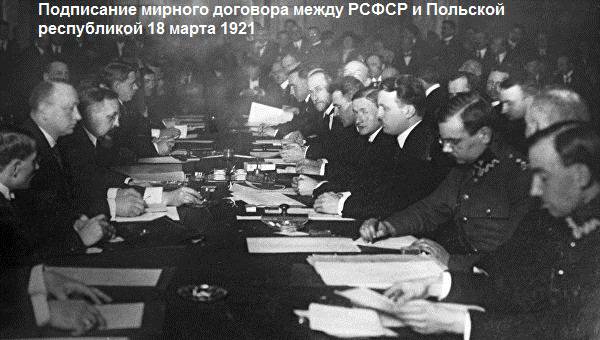
Sources:
Meltyukhov M. Soviet-Polish War. Military-political confrontation 1918-1939 M .: Veche, 2001. C.12-44.
Pykhalov I. Last dog of the Entente // Special Forces of Russia. No.9 (72). 2002. C. 6-17
Ivanov Yu. Essays stories Soviet-Polish relations in documents 1917 — 1945. // Our contemporary. 2003. No.10. C.38-46.
Dadiai G. Soviet-Polish War 1919-1920 // visage 1995. No.5. C.24-30.
Simonova T. Soviet Russia (USSR) and Poland. M .: Quadriga, 2013 G.S.3-8, 56-89.
Kuzmin N. The collapse of the last campaign of the Entente. M .: State publishing house of political literature, 1958. C.42-76.
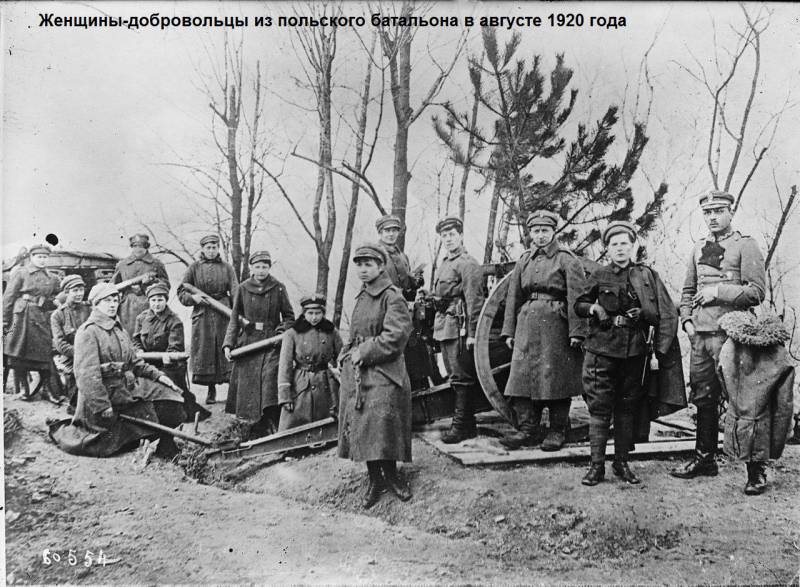
Information